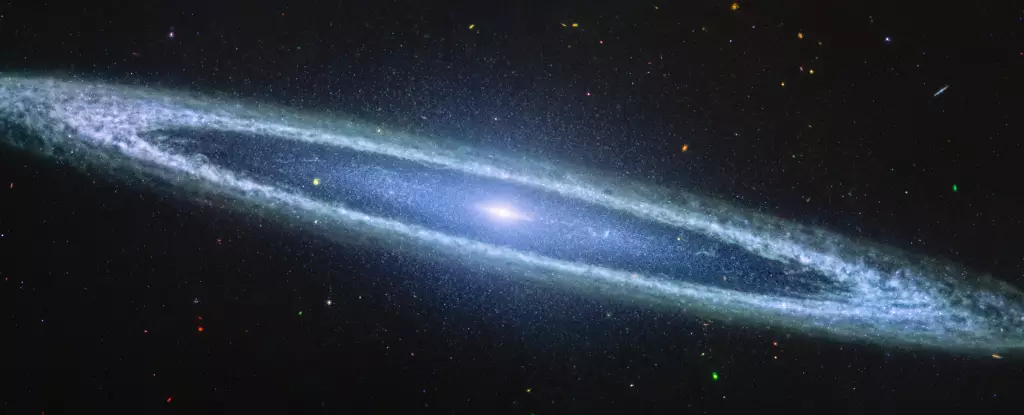Discovered in 1781 by astronomer Pierre Méchain, NGC 4594, commonly referred to as the Sombrero Galaxy, stands out in the cosmos not merely due to the striking visual of its dusty ring but also because of the wealth of information it provides about galaxy formation and evolution. Nestled approximately 28 million light-years from Earth in the Virgo constellation, this galaxy resembles a wide-brimmed hat, embodying an array of intriguing characteristics that challenge conventional understandings of galactic structure.
The world of astronomy has been transformed by technological advancements, particularly through the efforts of space telescopes. The Hubble Space Telescope has long held reign over the imaging of distant galaxies, providing breathtaking views of NGC 4594. However, its reliance on optical light limits its ability to pierce through the dense dust that encircles this fascinating galaxy. Thus, the launch of the James Webb Space Telescope (JWST) has marked a significant turning point in our exploration of the cosmos. With its Mid-Infrared Instrument (MIRI), the JWST can delve through the obscuring dust to unveil the true nature of the Sombrero Galaxy.
Initial assumptions about the dust ring surrounding NGC 4594 posited that it could be a flourishing stellar nursery teeming with young stars. Conventional wisdom suggested that the stellar fabric hidden within could reveal the galaxy’s rich history of star formation. However, the JWST’s observations tell a surprising tale. Images captured by the telescope show clumps of warm molecular gas engaging in their own dynamic processes, but reveal an unexpected scarcity of young stars. Instead of a bright array of stellar births illuminating the dust ring, the JWST presents evidence that this region is not a significant site of star formation as once thought.
This revelation compels astronomers to rethink the role of dust rings in galactic environments. The presence of warm gas without a corresponding population of young stars raises questions about the conditions necessary for star formation, suggesting that perhaps NGC 4594 operates under different rules than its more common counterparts.
Furthermore, the JWST’s close inspection into the central region of the Sombrero Galaxy provides profound insights into its core dynamics. Contrary to expectations of a bulging halo of stars around an enigmatic black hole, the imagery reveals a flat disk structure instead. This observation is pivotal—while the central black hole is active, it’s categorized as a low-luminosity galactic nucleus, offering a stark contrast to more energetically active galactic nuclei that exhibit powerful jets of plasma.
This juxtaposition prompts further inquiry into the evolutionary paths of galaxies. Why does NGC 4594 maintain a relatively subdued central activity when many other galaxies exhibit intense energy release? The uniqueness of the Sombrero Galaxy in this regard could be linked to its high number of globular clusters—approximately 2,000, which is unusual for a galaxy of its size.
Looking forward, the insights gained from the JWST’s images of NGC 4594 are just the beginning. As astronomers continue to analyze this galactic marvel, the focus on its numerous globular clusters will likely unfold more secrets about its formation and the evolutionary processes that shaped it. These clusters can serve as time capsules offering snapshots of the galaxy’s history and, by extension, contribute to our understanding of cosmic evolution at large.
The James Webb Space Telescope has opened a new chapter in our understanding of the Sombrero Galaxy. Not only does it challenge existing paradigms surrounding star formation in dust rings and the nature of galactic nuclei, but it also invites us to marvel at the sorrows, surprises, and complexities of the universe. Such findings remind us that our journey into the depths of space has only just begun, illuminating the profound mysteries that await discovery.


Leave a Reply